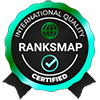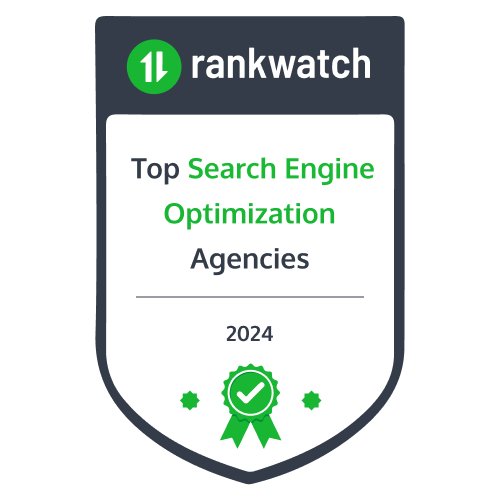Search engine optimization (SEO) is a critical aspect of building a successful website. SEO can help you rank higher in search engine results pages (SERPs), increase website traffic, and ultimately drive conversions. However, SEO can be complex and confusing, especially for beginners.
In this guide, we will provide you with everything you need to know to get started with SEO for your site. From keyword research to technical optimization, we will cover it all.

The Basics of SEO
What is SEO?
SEO refers to the practice of optimizing your website for search engines. This involves a range of activities, including keyword research, on-page optimization, technical optimization, and link building. The goal of SEO is to improve your website’s visibility in search engine results pages (SERPs) and drive more traffic to your site.
Why is SEO important?
SEO is important because it can help you rank higher in search engine results pages (SERPs) and drive more traffic to your site. The higher your site ranks in search results, the more likely people are to click on your website. This can lead to increased website traffic and ultimately drive more conversions.
Keyword Research
What are keywords?
Keywords are the words and phrases that people use to search for information online. For instance, I recently began a site selling Procreate brushes. I target different keywords like procreate anime brushes, procreate cartoon brushes, procreate tattoo brushes and so on borne out of keyword research. Keyword research involves identifying the keywords and phrases that are relevant to your business and the products or services you offer.
By targeting these keywords in your content, you can improve your website’s visibility in search engine results pages (SERPs). Jump on zoom calls with your customers and try and figure out words they use to phrase their problems.
How to conduct keyword research
There are several marketing project management tools you can use to conduct keyword research, including Google Keyword Planner, SEMrush, and Ahrefs. When conducting keyword research, consider the following:
- Relevance: Choose keywords that are relevant to your business and the products or services you offer.
- Search volume: Choose keywords with high search volume to maximize the potential traffic to your site.
- Competition: Choose keywords with low competition to improve your chances of ranking in search results.
On-Page Optimization
Title tags and meta descriptions
Have the right SEO mindset. Title tags and meta descriptions are HTML elements that provide information about your web page to search engines. They are also the first thing people see when your site appears in search results. To optimize your title tags and meta descriptions, consider the following:
- Length: Keep your title tags and meta descriptions within the recommended character limits to ensure they are fully displayed in search results.
- Relevance: Include your target keywords in your title tags and meta descriptions to improve your website’s visibility in search results.
- Compelling: Make sure your title tags and meta descriptions are compelling and encourage people to click on your website.
Headers and subheaders
Headers and subheaders (H1, H2, H3, etc.) help organize your content and make it easier for search engines to understand the structure of your website. To optimize your headers and subheaders, consider adding main keywords to them.
Content optimization
Content optimization is a critical aspect of on-page SEO. It involves ensuring that your content is high-quality, relevant, and engaging to your target audience. You can outsource content to Byword. To optimize your content, consider the following:
- Keyword targeting: Include your target keywords in your content, but don’t overdo it. Use them naturally and strategically throughout your content.
- Length: Aim for longer, more comprehensive content that provides value to your audience.
- Readability: Make sure your content is easy to read and understand. Use short paragraphs, subheadings, and bullet points to break up your content and improve readability like I used in this story about Grammarly free trial.
- Multimedia: Incorporate multimedia elements, such as images and videos, to enhance your content and engage your audience.
- Branding: A well-known brand can attract more clicks than a less-known one. Search engines pay attention to click-through rates, so higher click-through rates can lead to better rankings.
- User intent: Make sure your content aligns with the user intent behind the keywords you are targeting. Your content should provide the information or solution that your audience is looking for.
Internal linking
Internal linking involves linking to other pages on your website. This helps search engines understand the structure of your website and improves the user experience for your audience. To optimize your internal linking, consider the following:
- Anchor text: Use descriptive anchor text to indicate the content of the page you are linking to.
- Relevance: Only link to pages that are relevant to the content of your page.
- Number of links: Don’t overdo it with internal links. Only include links where they are helpful and relevant.
Jobber excels in its internal linking strategy, as seen in their HVAC License Guide where they’ve incorporated highly relevant internal links throughout. By linking to their How to Start an HVAC Business page and HVAC Salary Guide within the introduction alone, Jobber enhances their website’s rankings and provides additional resources for their readers.
Technical Optimization
Site speed
Site speed is a critical factor in SEO. A slow-loading website can lead to a poor user experience and a lower ranking in search results. You can always use a marketing automation tool to take care of this. To optimize your site speed, consider the following:
- Image optimization: Compress images to reduce file size and improve loading times.
- Caching: Use caching to store frequently accessed content and reduce server load.
- Minification: Minify CSS, JavaScript, and HTML files to reduce their file size and improve loading times.
Mobile optimization
With more and more people accessing the internet on mobile devices, mobile optimization is crucial for SEO. To optimize your website for mobile devices, consider the following:
- Responsive design: Use a responsive design that adjusts to different screen sizes and resolutions.
- Mobile-friendly content: Ensure your content is easy to read and navigate on mobile devices.
- Page speed: Optimize your site speed for mobile devices to improve the user experience.
URL structure
URL structure is an important aspect of technical SEO. A well-structured URL can help search engines understand the content of your page and improve your ranking in search results. To optimize your URL structure, consider the following:
- Descriptive URLs: Use descriptive URLs that accurately reflect the content of your page.
- Short URLs: Keep your URLs short and concise.
- Hyphens: Use hyphens to separate words in your URLs.
Site architecture
Site architecture refers to the way your website is structured and organized. A well-organized website can help search engines understand the content of your site and improve your ranking in search results. To optimize your site architecture, consider the following:
- Logical structure: Ensure your website is organized in a logical manner that is easy to navigate.
- Sitemap: Create a sitemap to help search engines understand the structure of your website.
- Internal linking: Use internal linking to help search engines understand the relationships between different pages on your site.
Link Building
What are backlinks?
Backlinks are links from other websites that point to your website. Backlinks are an important ranking factor in SEO because they indicate to search engines that other websites consider your content to be valuable and relevant.
How to build high-quality backlinks
Building high-quality backlinks requires a strategic approach. To build high-quality backlinks, consider the following
Link building is the process of acquiring backlinks from other websites to your own website. Backlinks are an essential ranking factor in SEO, and building high-quality backlinks can significantly improve your website’s visibility in search results.
Types of backlinks
There are two types of backlinks: dofollow and nofollow.
- Dofollow backlinks are links that search engines follow to crawl and index your website. They pass link equity, which can improve your website’s authority and ranking in search results.
- Nofollow backlinks are links that search engines do not follow. They do not pass link equity, but they can still drive traffic to your website and improve your online visibility.
Strategies for building high-quality backlinks
Building high-quality backlinks requires a strategic approach. Here are some strategies for building high-quality backlinks:
- Guest blogging: Guest blogging involves writing blog posts for other websites in your niche. In exchange, you can include a link back to your website in your author bio or within the content of your guest post.
- Broken link building: Broken link building involves finding broken links on other websites and offering to replace them with a link to your own content.
- Skyscraper technique: The skyscraper technique involves creating high-quality, in-depth content that is better than existing content on the same topic. You can then reach out to websites that link to the existing content and offer them a link to your superior content.
- Infographic outreach: Infographic outreach involves creating high-quality infographics and reaching out to websites in your niche to offer them the infographic in exchange for a backlink.
- Directory submissions: Directory submissions involve submitting your website to relevant directories, such as local business directories or industry-specific directories.
- You can also use an email finder tool like ContactOut to find emails and do outreach for backlinks.
Best practices for link building
When building backlinks, it’s important to follow best practices to avoid being penalized by search engines. Here are some best practices for link building:
- Focus on quality, not quantity: Building a few high-quality backlinks is better than building many low-quality backlinks.
- Use relevant anchor text: Use anchor text that accurately describes the content of the page you are linking to.
- Avoid spammy tactics: Avoid tactics such as buying links or participating in link farms, which can harm your website’s reputation and ranking in search results.
- Build a diverse link profile: Build backlinks from a variety of sources, including different types of websites and different types of content.
Overall, link building is an important aspect of SEO that can significantly improve your website’s visibility in search results. By following best practices and using effective strategies, you can build high-quality backlinks that drive traffic to your website and improve your online reputation.




